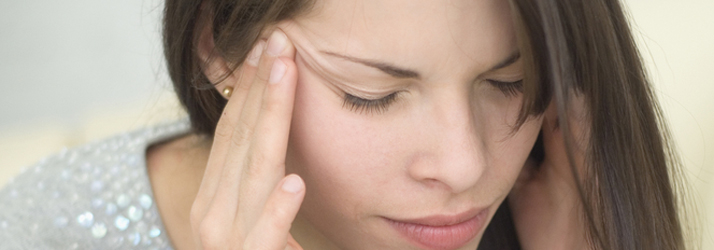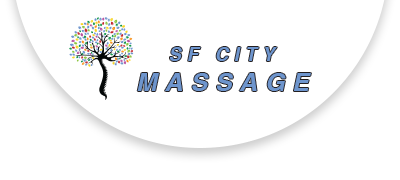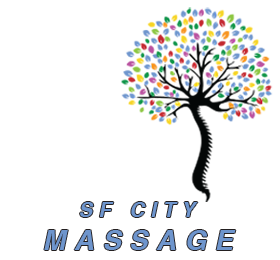MASSAGE FOR MIGRAINES IN San Francisco CA

Are you struggling with migraines in San Francisco CA? Migraines can be debilitating, with symptoms ranging from throbbing head pain to nausea, visual disturbances, and sensitivity to light and sound. These episodes can significantly impact your quality of life, making it crucial to explore effective treatments like massage therapy.
Understanding Migraines and Their Impact in San Francisco CA
Migraines are not just headaches; they are a complex neurological condition that affects millions of people worldwide. They are often characterized by intense, pulsating pain on one side of the head, though they can also affect both sides. Migraines can be triggered by various factors, including stress, hormonal changes, certain foods, sensory stimuli, and environmental factors.
The impact of migraines goes beyond the physical pain. It can lead to missed days at work or school, reduced productivity, and a diminished ability to engage in daily activities. The emotional toll of chronic migraines can also contribute to anxiety, depression, and overall decreased quality of life.
Massage Therapy for Migraine Relief
Massage therapy has emerged as a promising complementary approach to managing migraines and reducing their frequency, duration, and intensity. Here's how massage therapy can benefit individuals suffering from migraines:
- Stress Reduction: Stress is a common trigger for migraines. Massage therapy promotes relaxation, reduces muscle tension, and triggers the release of endorphins, which are natural stress-relieving hormones. By calming the nervous system and promoting a sense of well-being, massage therapy helps mitigate stress-related migraine triggers.
- Muscle Relaxation: Tight and tense muscles in the neck, shoulders, and head can contribute to migraine pain. Massage techniques such as Swedish massage, deep tissue massage, and myofascial release target these areas, promoting muscle relaxation, improving flexibility, and reducing muscular tension that can exacerbate migraines.
- Improved Blood Circulation: Massage therapy enhances blood flow and circulation, delivering oxygen and nutrients to tissues and aiding in the removal of metabolic waste products. Improved circulation can reduce vascular constriction, a common feature of migraines, and promote overall vascular health.
- Release of Serotonin: Serotonin is a neurotransmitter that plays a key role in regulating mood, sleep, and pain perception. Massage therapy stimulates the release of serotonin, promoting feelings of relaxation, reducing pain sensitivity, and potentially alleviating migraine symptoms.
- Enhanced Sleep Quality: Many migraine sufferers experience disruptions in sleep patterns, which can exacerbate migraine frequency and severity. Massage therapy promotes better sleep by inducing a state of relaxation, reducing anxiety, and improving overall sleep quality, leading to fewer migraine-related sleep disturbances.
- Mind-Body Connection: Massage therapy encourages mindfulness and body awareness, helping individuals identify and manage migraine triggers more effectively. By fostering a deeper connection between the mind and body, massage therapy empowers individuals to take an active role in their migraine management and prevention.
- Holistic Approach: Massage therapy is part of a holistic approach to migraine management that includes lifestyle modifications, stress management techniques, dietary changes, and other complementary therapies. Integrating massage therapy into a comprehensive treatment plan can enhance overall well-being and resilience to migraine triggers.
Massage Techniques for Migraine Relief in San Francisco CA
Massage therapists use a variety of techniques to address migraine symptoms and promote relaxation. Some effective massage techniques for migraine relief include:
- Swedish Massage Therapy: This gentle and soothing massage technique involves long, fluid strokes, kneading, and circular motions to promote relaxation, improve circulation, and reduce muscle tension.
- Deep Tissue Massage: Deep tissue massage targets deeper layers of muscle and connective tissue to release chronic tension, break up adhesions, and alleviate muscle stiffness that can contribute to migraines.
- Myofascial Release: This technique focuses on releasing tension and tightness in the fascia, the connective tissue surrounding muscles. By addressing fascial restrictions, myofascial release can improve range of motion, reduce pain, and enhance overall mobility.
- Trigger Point Therapy: Trigger points are areas of tightness and tenderness in muscles that can refer pain to other parts of the body, including the head and neck. Trigger point therapy involves applying sustained pressure to these points to release tension and alleviate pain.
- Craniosacral Therapy: This gentle and non-invasive technique focuses on the craniosacral system, which includes the skull, spine, and cerebrospinal fluid. By promoting balance and relaxation in the craniosacral system, craniosacral therapy can reduce migraine symptoms and improve overall well-being.
- Aromatherapy: Combining massage therapy with aromatherapy, using essential oils like lavender, peppermint, or chamomile, can enhance relaxation, reduce stress, and provide additional relief from migraine symptoms.
Benefits of Integrating Massage Therapy into Migraine Management
Integrating massage therapy into a comprehensive migraine management plan offers numerous benefits:
- Reduced Migraine Frequency: Regular massage therapy sessions can lead to a reduction in the frequency of migraines, allowing individuals to experience fewer and less severe migraine episodes over time.
- Improved Pain Management: Massage therapy provides natural pain relief by targeting muscular tension, promoting relaxation, and stimulating the release of endorphins, which act as the body's natural painkillers.
- Enhanced Stress Management: Stress is a significant trigger for migraines. Massage therapy helps individuals manage stress more effectively by inducing relaxation, calming the nervous system, and promoting emotional well-being.
- Better Sleep Quality: Quality sleep is essential for migraine management. Massage therapy improves sleep quality by reducing insomnia, promoting relaxation, and easing muscle tension that can interfere with restful sleep.
- Holistic Approach: Massage therapy is part of a holistic approach to migraine management that addresses physical, emotional, and lifestyle factors contributing to migraine symptoms. By taking a comprehensive approach, individuals can achieve long-term relief and improved well-being.
- Personalized Treatment: Each individual experiences migraines differently, and massage therapy offers personalized treatment tailored to the unique needs and preferences of each person. Massage therapists work collaboratively with clients to develop customized treatment plans for optimal results.
- Non-Invasive and Natural: Unlike medications or invasive procedures, massage therapy is non-invasive, natural, and free from potential side effects. It provides a safe and effective alternative or complement to conventional migraine treatments.
- Empowerment and Self-Care: Massage therapy empowers individuals to take an active role in their migraine management and self-care. By learning relaxation techniques, mindfulness practices, and stress-reduction strategies, individuals can better cope with migraine triggers and improve their overall quality of life.
Research Supporting Massage Therapy for Migraines
Numerous studies have explored the efficacy of massage therapy in managing migraines and related symptoms:
- A 2016 study published in the Journal of Clinical and Diagnostic Research found that massage therapy significantly reduced the frequency, duration, and intensity of migraine attacks in participants compared to a control group.
- A 2019 systematic review and meta-analysis published in Pain Medicine concluded that massage therapy was effective in reducing migraine frequency and intensity, with sustained benefits over time.
- A 2020 randomized controlled trial published in the Journal of Alternative and Complementary Medicine reported that massage therapy combined with acupuncture resulted in greater improvements in migraine symptoms, including pain intensity and frequency, compared to acupuncture alone.
- A 2021 review article in the Journal of Pain Research highlighted the role of massage therapy in alleviating migraine-related pain, muscle tension, and stress, emphasizing its potential as a non-pharmacological treatment option.
These findings underscore the growing body of evidence supporting the use of massage therapy as a valuable and effective treatment for migraines. By addressing underlying muscular tension, promoting relaxation, and enhancing overall well-being, massage therapy offers a holistic approach to migraine management that can improve quality of life and reduce reliance on medication.
Integrating Massage Therapy into Your Migraine Management Plan
If you suffer from migraines in San Francisco CA, consider integrating massage therapy into your migraine management plan. Here are some steps to take:
- Consult with a Healthcare Provider: Before starting any new treatment, consult with your healthcare provider to discuss your migraine symptoms, medical history, and treatment options. Your healthcare provider can offer guidance on incorporating massage therapy into your overall migraine management plan.
- Find a Qualified Massage Therapist: Look for a licensed and experienced massage therapist who specializes in treating migraines and related conditions. Ask about their training, expertise, and approach to migraine management through massage therapy.
- Discuss Your Needs: During your initial consultation with the massage therapist, discuss your migraine symptoms, triggers, and treatment goals. Be open about your preferences, concerns, and any previous experiences with massage therapy or other treatments.
- Customized Treatment Plan: Work with the massage therapist to develop a customized treatment plan tailored to your specific needs and preferences. This may include a combination of massage techniques, frequency of sessions, and self-care strategies to support ongoing migraine management.
- Regular Sessions: Commit to regular massage therapy sessions as part of your migraine management routine. Consistency is key to experiencing the full benefits of massage therapy, including reduced migraine frequency, improved pain management, and enhanced overall well-being.
- Track Your Progress: Keep track of your migraine symptoms, pain levels, and overall well-being before, during, and after massage therapy sessions. Notice any changes or improvements in migraine frequency, intensity, duration, and associated symptoms.
- Explore Complementary Therapies: In addition to massage therapy, consider incorporating other complementary therapies into your migraine management plan, such as acupuncture, relaxation techniques, dietary modifications, and stress-reduction strategies.
- Communicate with Your Healthcare Team: Stay in communication with your healthcare provider, massage therapist, and other members of your healthcare team. Share updates on your progress, any changes in symptoms, and any concerns or questions you may have about your migraine management plan.
By taking a proactive and holistic approach to migraine management that includes massage therapy, you can empower yourself to reduce migraine frequency, alleviate pain, and improve your overall quality of life. Don't let migraines hold you back—explore the benefits of massage therapy today and start your journey toward better migraine management and well-being in San Francisco CA.
OFFICE HOURS
Monday
11:00am - 6:00pm
Tuesday
11:00am - 6:00pm
Wednesday
11:00am - 6:00pm
Thursday
11:00am - 6:00pm
Friday
11:00am - 6:00pm
Saturday
11:00am - 5:00pm
Sunday
Closed
SF City Massage
1199 Irving St Ste A
San Francisco, CA 94122



